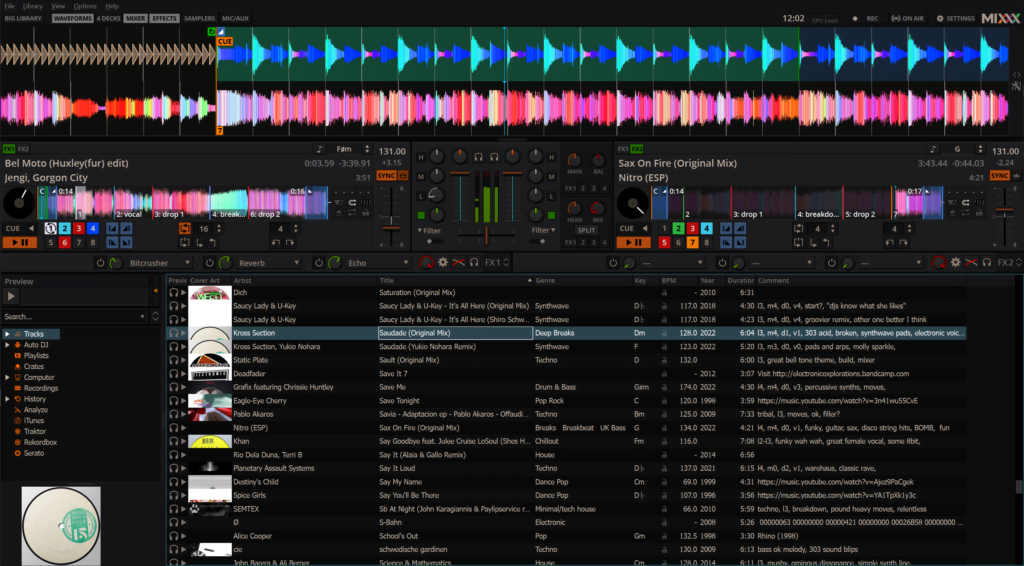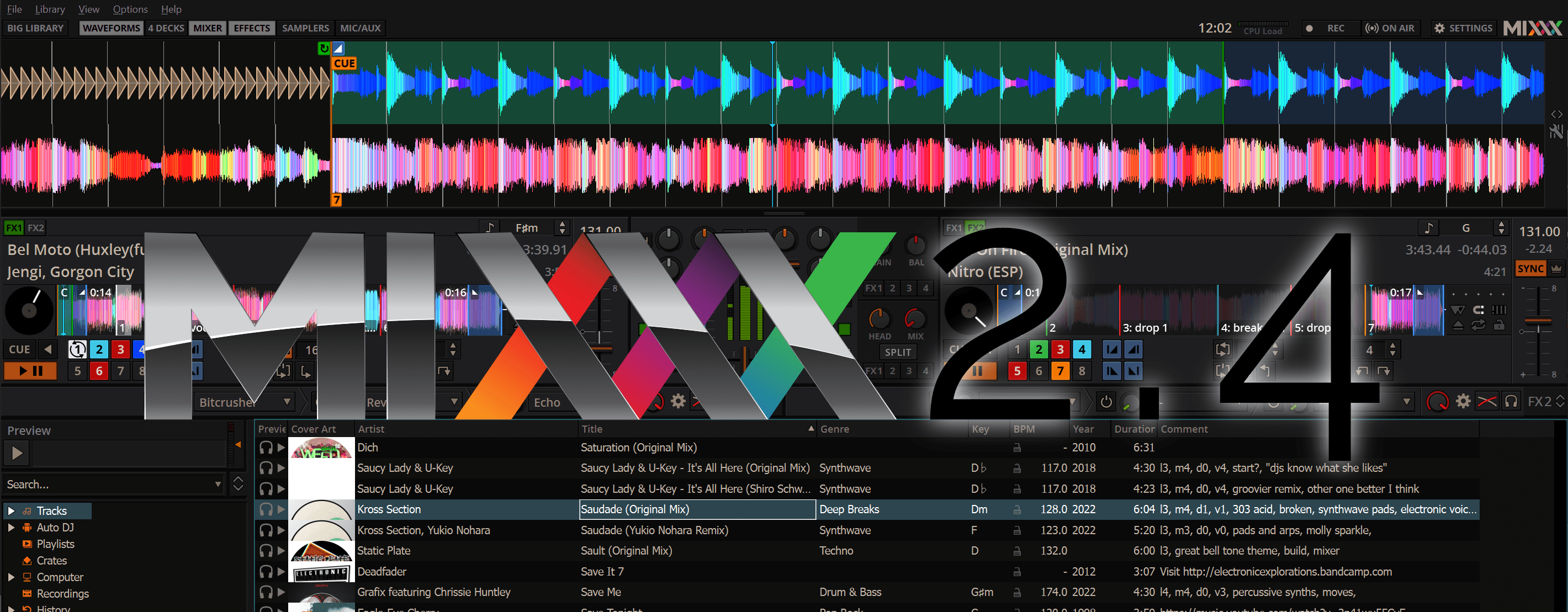Almost a year in beta, open source software Mixxx 2.4 is now available for download for Windows, macOS, and various Linux flavours. The software has been steadily improving over the years, and the core features are arguably on par with their commercial competitors. I even managed to get a friend to switch over to it when they got sick of their old software…

The release is a beefy one, so here’s the skinny from their blog post…
EngineOS Export
Mixxx 2.4 adds support for exporting crates, playlists and the library to Engine DJ OS devices, including Denon and Numark standalone controllers. This allows users to prepare their tracks on a laptop using Mixxx and export them to a USB stick for use on a standalone controller at their gig.
Saved Loops
Mixxx 2.4 adds support for Saved Loops, which can be assigned to any Hot Cue slot. If you already have tracks from Serato DJ with Saved Loops, Mixxx 2.4 will import them automatically.
Effect Chains
Mixxx 2.4 introduces Effect Chains, a set of effects which can be saved and reloaded with all their parameters and individual Meta Knob mappings. Effect Chains can also be exported and imported, which allows you to share them with other Mixxx DJs. Once you’ve created an Effect Chain, you can create a custom Super Knob mapping which turns the chain into a Quick-Effect, where you take creative control with a single knob. Effect parameters can be reordered and or hidden. In the effect units, Mixxx 2.4 also displays the value and unit of effect knob parameters while they are being adjusted.
Track Menu Enhancements
The track menu in Mixxx 2.4 is enhanced by several new features:
- Select loaded track in library.
- Analyze/re-analyze with variable/constant BPM on a per-track basis.
- Look up track metadata at Discogs, SoundCloud and LastFM.
- Remove track files from disk.
Sync Lock Improvements
Mixxx 2.4 adds support for manually selecting the Sync Leader by clicking on the new button with the crown symbol next to the Sync button. This mode is useful when tracks have variable BPM. All decks with sync enabled will follow the changing BPM of the Sync Leader.
Many Other Changes
Soundstretcher / Key-Shift Algorithms
Mixxx 2.4 now supports three different key shift algorithms:
- Soundtouch (Basic audio quality – medium CPU usage)
- Rubberband R2 (Good audio quality – higher CPU usage)
- Rubberband R3 (High audio quality – very high CPU usage)
Waveform Rendering Reworked
The waveform display has been rewritten, solving some longstanding performance issues, especially on macOS.
Apple Silicon Support
Mixxx now supports macOS ARM systems (“Apple Silicon”) such as M1 natively and provides installation packages for those architectures. For macOS users, this increases the stability and performance of Mixxx on Apple silicon.
Controller Backend
Modernized Javascript ES7 based controller mapping system. HID backend rework.
My take
I dip in to try Mixxx with every release, each time pondering if I can take the leap from Traktor (and djay). I am 100% behind what the project is doing, and constantly in awe of what the team is able to do with volunteer contributors.
From the list of features in this release, the big ones are native Apple Silicon support, better time stretching, the new effects chains, and saved loops, which I’m honestly surprised hadn’t already been implemented.
EngineOS export support is a nice-to-have, but I do wonder how much it will get used. Anyone using inMusic’s platform would already be integrated into the Engine desktop app for library management, and… let’s be honest, you’re not going to see very many Denon DJ products out in the wild.
For me, there are some ongoing parts of the user experience that I struggle to overcome. One is the very busy UI that I’ve yet to find a skin that doesn’t implement Traktor’s deck-based scrolling waveforms. I will fight to the death defending the argument that it’s the best way to present four decks of music at once. Having four stacked waveforms scrolling is horrible workflow and disorientating.
Another issue is the lack of master clock for syncing. There’s no clock sending out to other software (Ableton Link or otherwise), and having a master tempo to sync decks to is great for mixing in and out of other people’s setups.
Lastly, the MIDI mapping system and MIDI support for a lot of newer controllers is severely lacking, but this has been the case ever since I can remember. The developers are partly beholden to the availability of devices within the team, which I respect, but this is often what makes or breaks critical mass of users.
Over to you
Have you been using Mixxx or tried the app over the years? What needs to be added to Mixxx in the future?
Grab the latest version of Mixxx for your favourite OS from mixxx.org.



